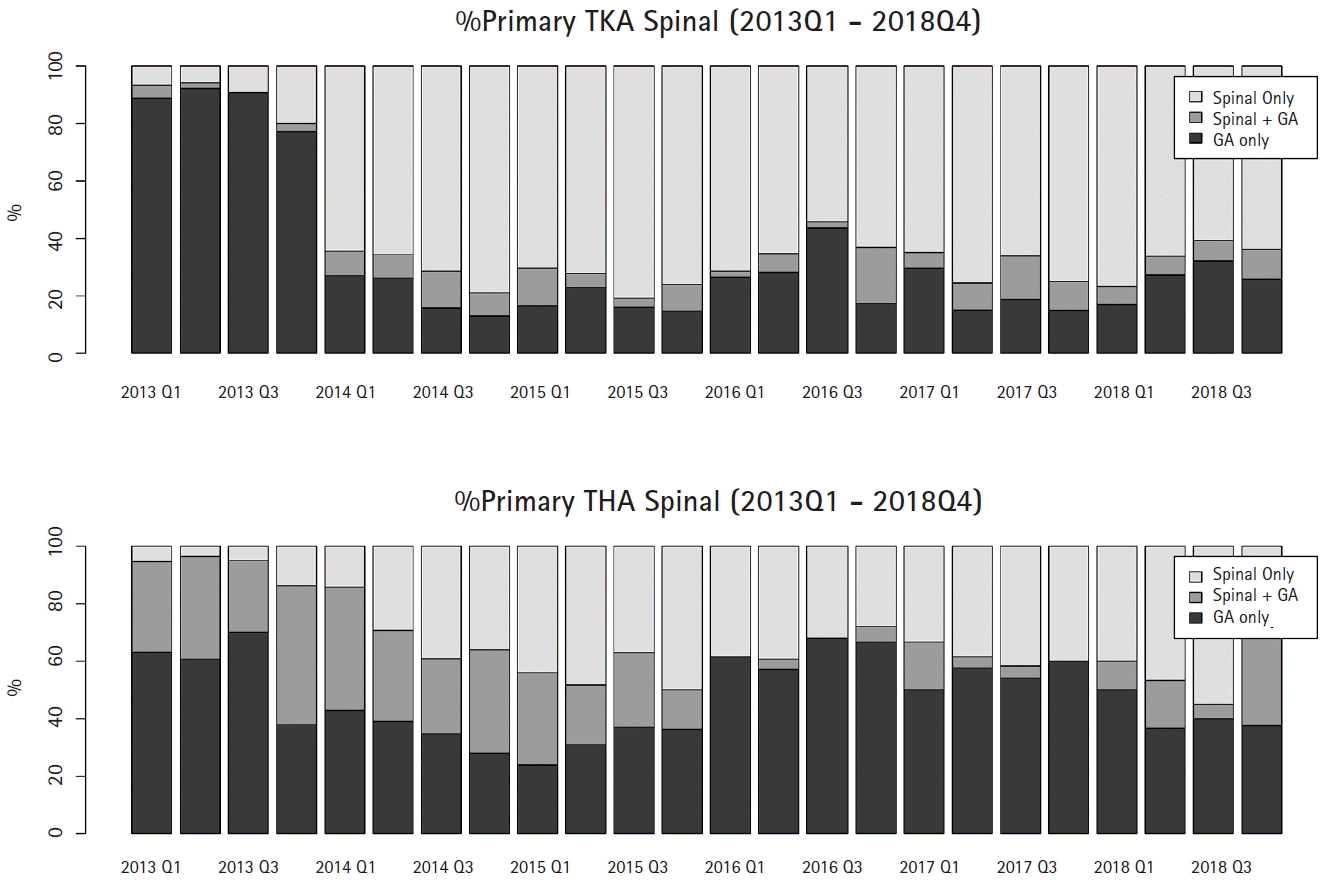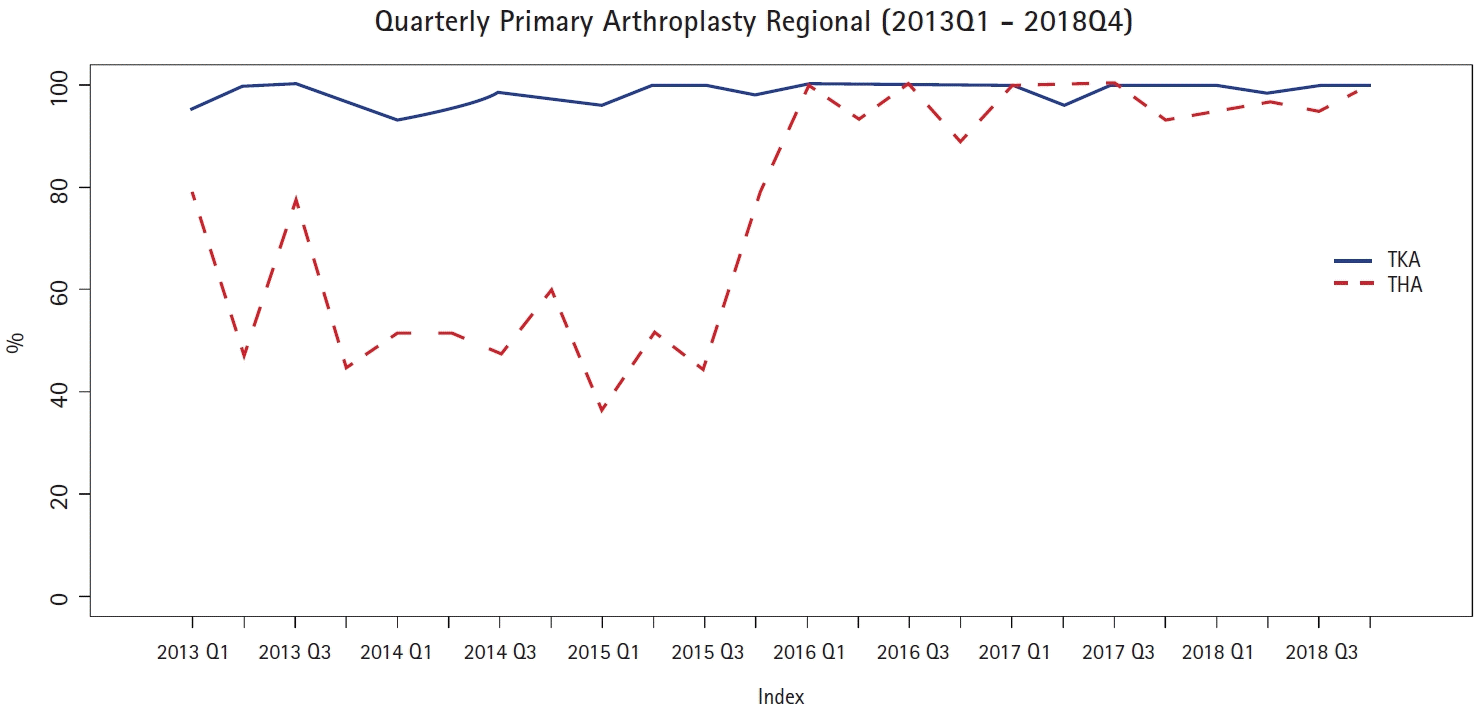1. Memtsoudis SG, Cozowicz C, Bekeris J, Bekere D, Liu J, Soffin EM, et al. Anaesthetic care of patients undergoing primary hip and knee arthroplasty: consensus recommendations from the International Consensus on Anaesthesia-Related Outcomes after Surgery group (ICAROS) based on a systematic review and meta-analysis. Br J Anaesth. 2019; 123:269–87.

2. Cozowicz C, Poeran J, Zubizarreta N, Mazumdar M, Memtsoudis SG. Trends in the use of regional anesthesia: neuraxial and peripheral nerve blocks. Reg Anesth Pain Med. 2016; 41:43–9.
3. Liu J, Wilson L, Poeran J, Fiasconaro M, Kim DH, Yang E, et al. Trends in total knee and hip arthroplasty recipients: a retrospective cohort study. Reg Anesth Pain Med. 2019; Advance Access published on Jul 11, 2020. doi: 10.1136/rapm-2019-100678.

4. Morris ZS, Wooding S, Grant J. The answer is 17 years, what is the question: understanding time lags in translational research. J R Soc Med. 2011; 104:510–20.

5. Cabana MD, Rand CS, Powe NR, Wu AW, Wilson MH, Abboud PA, et al. Why don't physicians follow clinical practice guidelines? A framework for improvement. JAMA. 1999; 282:1458–65.

6. Mudumbai SC, Walters TL, Howard SK, Kim TE, Lochbaum GM, Memtsoudis SG, et al. The Perioperative Surgical Home model facilitates change implementation in anesthetic technique within a clinical pathway for total knee arthroplasty. Healthc (Amst). 2016; 4:334–9.

7. Memtsoudis SG, Sun X, Chiu YL, Stundner O, Liu SS, Banerjee S, et al. Perioperative comparative effectiveness of anesthetic technique in orthopedic patients. Anesthesiology. 2013; 118:1046–58.

8. Silver SA, McQuillan R, Harel Z, Weizman AV, Thomas A, Nesrallah G, et al. How to sustain change and support continuous quality improvement. Clin J Am Soc Nephrol. 2016; 11:916–24.

9. Walters TL, Howard SK, Kou A, Bertaccini EJ, Harrison TK, Kim TE, et al. Design and implementation of a perioperative surgical home at a Veterans Affairs Hospital. Semin Cardiothorac Vasc Anesth. 2016; 20:133–40.

10. Mariano ER, Walters TL, Kim TE, Kain ZN. Why the perioperative surgical home makes sense for Veterans Affairs Health Care. Anesth Analg. 2015; 120:1163–6.

11. Steckelberg RC, Funck N, Kim TE, Walters TL, Lochbaum GM, Memtsoudis SG, et al. Adherence to a multimodal analgesic clinical pathway: a within-group comparison of staged bilateral knee arthroplasty patients. Reg Anesth Pain Med. 2017; 42:368–71.
12. Mariano ER, Kim TE, Wagner MJ, Funck N, Harrison TK, Walters T, et al. A randomized comparison of proximal and distal ultrasound-guided adductor canal catheter insertion sites for knee arthroplasty. J Ultrasound Med. 2014; 33:1653–62.

13. Mudumbai SC, Kim TE, Howard SK, Giori NJ, Woolson S, Ganaway T, et al. An ultrasound-guided fascia iliaca catheter technique does not impair ambulatory ability within a clinical pathway for total hip arthroplasty. Korean J Anesthesiol. 2016; 69:368–75.

14. Pluye P, Potvin L, Denis JL, Pelletier J. Program sustainability: focus on organizational routines. Health Promot Int. 2004; 19:489–500.

15. Lubarsky DA, French MT, Gitlow HS, Rosen LF, Ullmann SG. Why money alone can't (always) "nudge" physicians: the role of behavioral economics in the design of physician incentives. Anesthesiology. 2019; 130:154–70.
17. Elkassabany NM, Memtsoudis SG, Mariano ER. What can regional anesthesiology and acute pain medicine learn from "big data"? Anesthesiol Clin. 2018; 36:467–78.

18. Trivedi RB, Post EP, Sun H, Pomerantz A, Saxon AJ, Piette JD, et al. Prevalence, comorbidity, and prognosis of mental health among US veterans. Am J Public Health. 2015; 105:2564–9.

19. Olenick M, Flowers M, Diaz VJ. US veterans and their unique issues: enhancing health care professional awareness. Adv Med Educ Pract. 2015; 6:635–9.






 PDF
PDF Citation
Citation Print
Print




 XML Download
XML Download